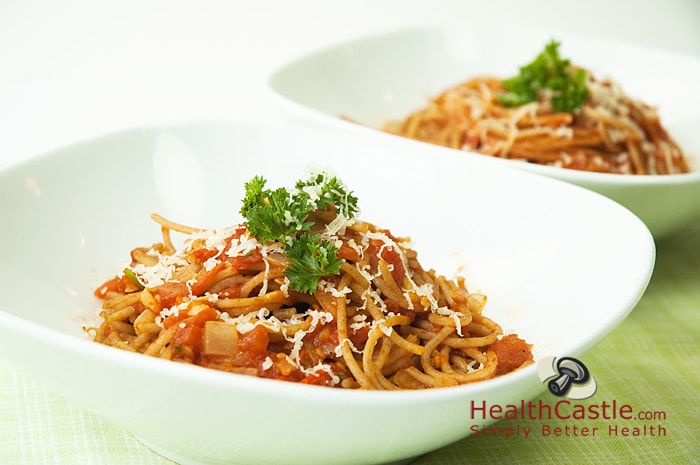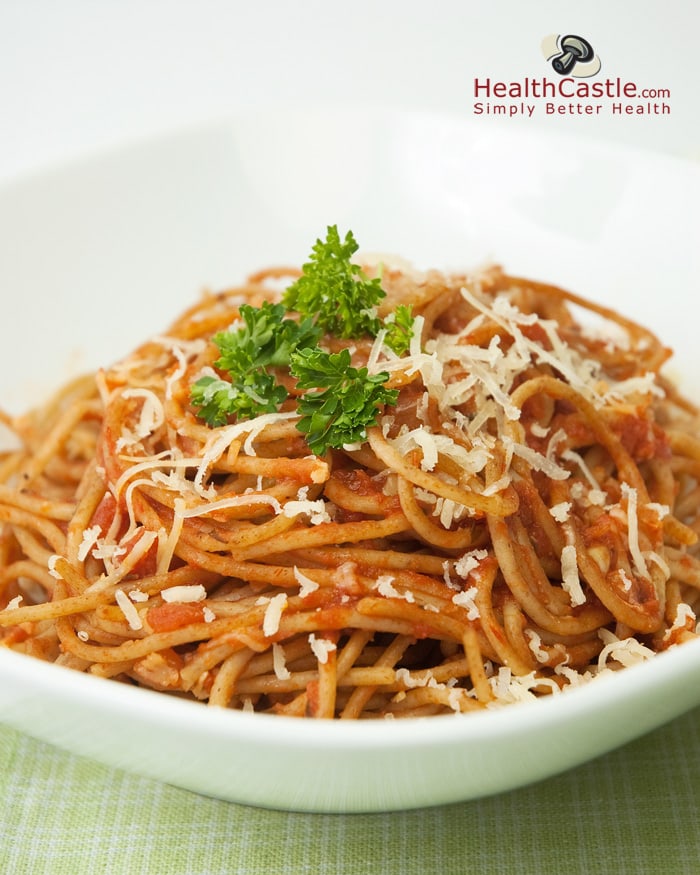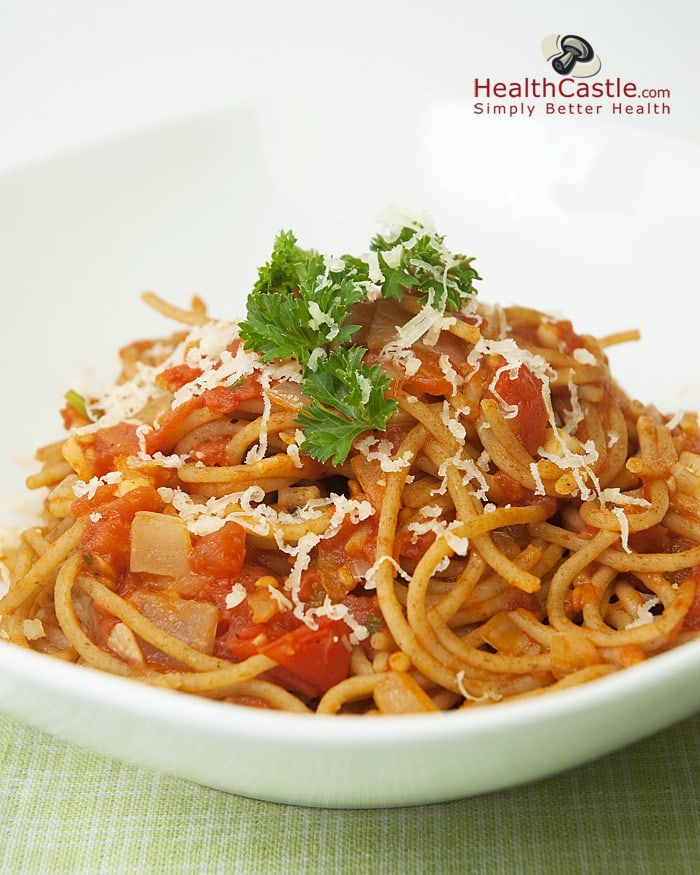
Written By: Owennie Lee, RD
Title: Registered Dietitian
Alumni: University of British Columbia
Last Updated on:


Stroll through the grocery store and you will see scores of jarred pasta sauces, often taking up a good portion of an aisle. It is obvious that we love to use ready-made pasta sauce, especially to whip up a quick dinner. With the recent spotlight on reducing the amount of sodium we consume, we decided to take a look at what’s in those jarred pasta sauces. We found that most of them are really high in sodium. We couldn’t help but wonder: Is it that much more work to make your own sauce, and is the perceived convenience worth the extra sodium?
Table of Contents


Check out the following table for the comparison between jarred tomato-based pasta sauce and homemade tomato pasta sauce:
|
Ragu
|
Homemade Tomato
|
|
|
Serving Size:
|
1 cup of sauce | ~ 1 cup |
|
Calories:
|
180 kcal | 93 kcal |
|
Protein:
|
4 g | 2.6 g |
|
Fat:
|
6 g | 4.3 g |
|
Trans Fat:
|
0 g | 0 g |
|
Carbohydrate:
|
26 g | 13.1 g |
|
Fiber:
|
6 g | 3.4 g |
|
Sodium:
|
1120 mg | 21 mg |
|
Preparation time:
|
20 minutes (20 minutes to cook the pasta and 2 minutes to warm the sauce while the pasta is cooking) | 20 minutes (20 minutes to cook the pasta, plus 10 minutes to cut the vegetables and 10 minutes to cook the sauce while the pasta is cooking) |
|
Price per serving:
|
$1.39 | $1.33 |
|
Ingredients:
|
Tomato puree (water, tomato paste), tomatoes, water, roasted garlic, soybean oil, sugar, salt, spice, dehydrated vegetables (onions, parsley), natural flavor, calcium chloride, citric acid and sulphites. May contain traces of milk ingredients. | Fresh tomatoes, onion, garlic, tomato paste, olive oil, bay leaf, salt, pepper |
We were surprised that the two recipes took us the same amount of time to prepare. The “convenient” way did not save any time due to the amount of time required to cook the pasta, so why not use that time to make a fresh sauce from scratch? We quoted 10 minutes for cutting vegetables, but if you don’t even want to do that you can always buy minced garlic and use canned crushed tomatoes, which are also less expensive. By using fresh tomatoes in our sauce, we were able to reduce the sodium content by a whopping 53 times from the jarred sauce! In addition, homemade sauce also skips the chemical additives like sulphites (a preservative that some people are allergic to), calcium chloride (stabilizer and thickener), and citric acid.
The homemade version tastes much fresher than the jarred version, and there is so much room to make the homemade basic sauce even more interesting. There are many pasta sauce recipes out there that require minimum work, but are big in flavors – so be sure to venture out and try them!
For a quick meal, there is nothing better than pasta with a homemade tomato sauce that is made from wholesome ingredients. It is easy to make and just as fast as heating the sauce from a jar. And more importantly, you won’t be downing nearly as much sodium with the homemade version – your whole family’s cardiovascular systems will thank you!
The original recipe is courtesy of The Food You Crave by Ellie Krieger. The original calls for canned tomatoes, which we have substituted with fresh ones to save on sodium. We’ve also decreased the simmering time, as we prefer to see some tomato chunks in the sauce.
This homemade recipe produces a little more than 1 cup.
Alumni: University of British Columbia – Owennie is a registered dietitian with a soft spot for chocolate and coffee. She is a believer in balance and moderation, and is committed to keeping healthy eating enjoyable and fun. Owennie received her dietetics training in Vancouver, and is a member of Dietitians of Canada and the College of Dietitians of British Columbia. She has experience in a wide variety of settings, such as clinical nutrition, long-term care and outpatient counseling. Owennie has also worked for a community nutrition hotline and participated regularly as a guest radio host, where she enjoyed sharing her passion and knowledge about food and nutrition with people.
home cooking, no more packaged foods, pasta sauce, recipes
Celebrate Ethnic Foods for Cinco de Mayo and Asian Heritage Month